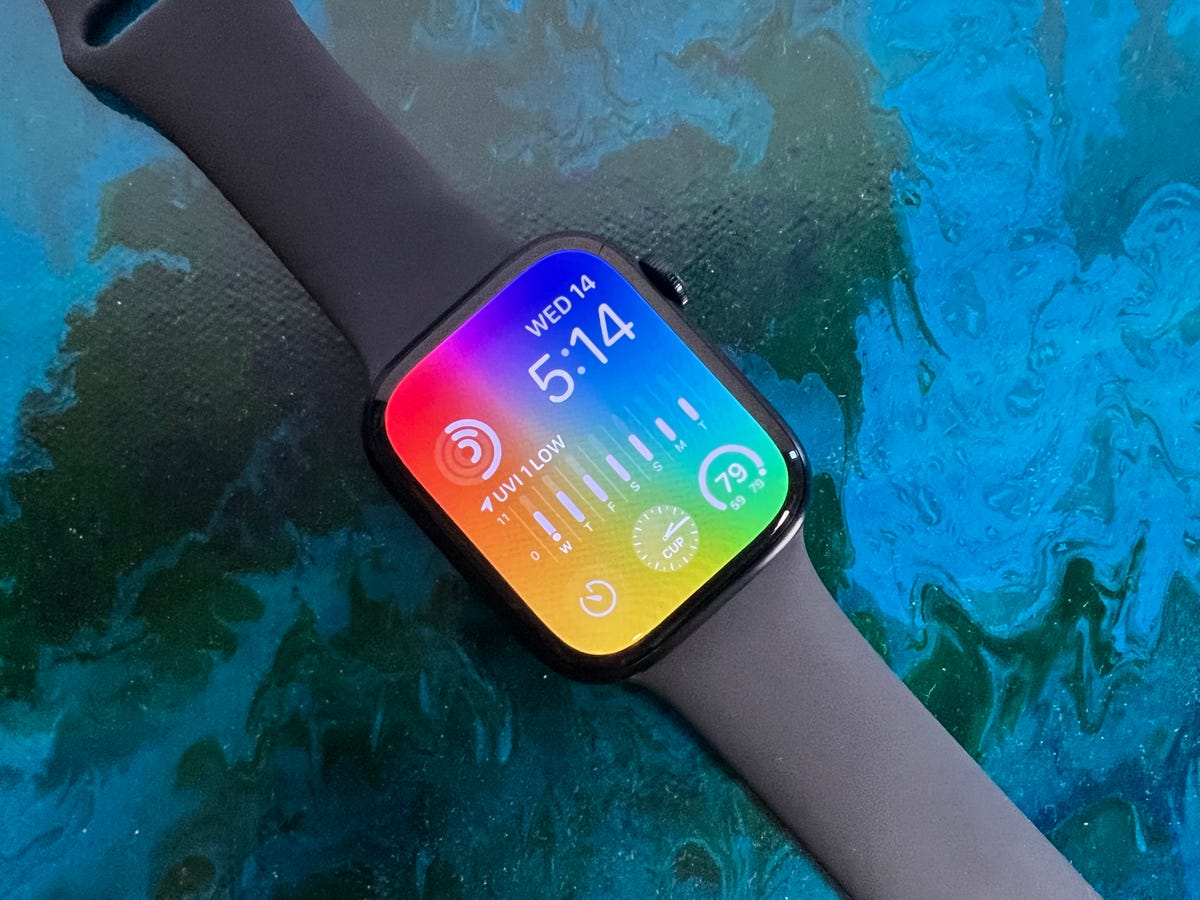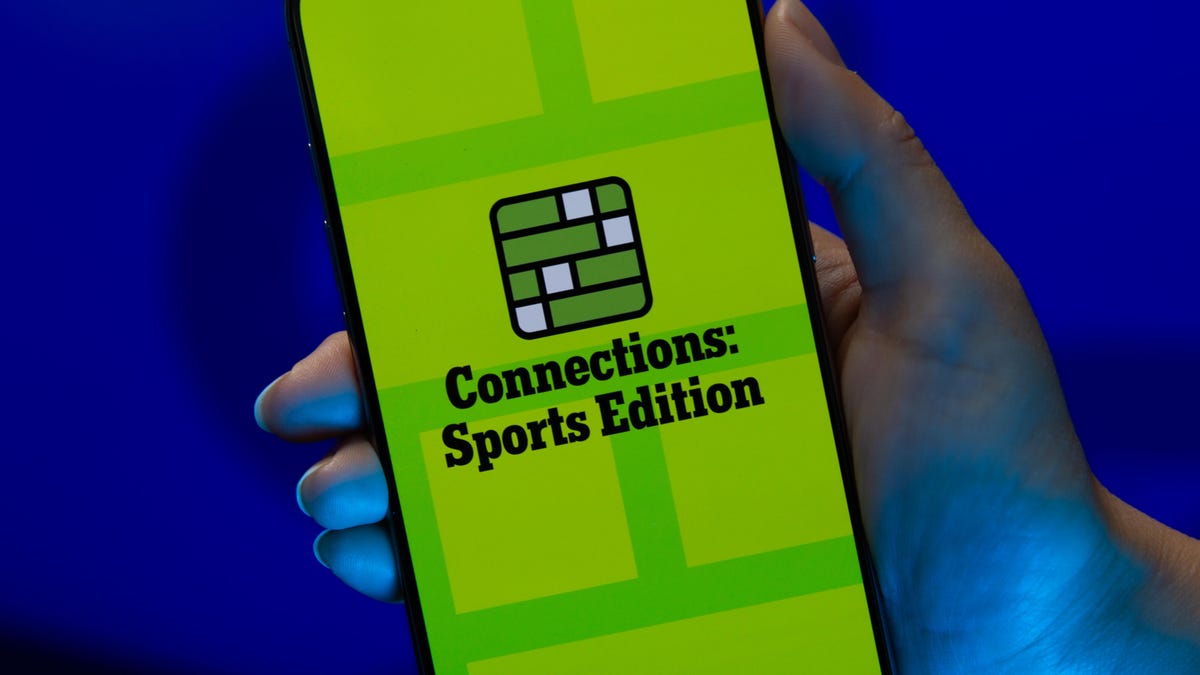Technologies
Apple Watch Series 9 Rumors: Will It Get a Blood Glucose Monitor?
The next Apple Watch is likely on the way. Here’s all the buzz about its release date, price and new features.

The iPhone 15 isn’t the only new device we’re expecting to see this year. The successor to the Apple Watch Series 8 is also likely to hit shelves in 2023. Apple is the king of smartwatches, and it’s been reigning supreme for years now despite a slow start. With 2023 underway, we’re looking forward to the next generation of the company’s iconic timepiece, the Apple Watch Series 9.
Over the years, Apple has made a steady stream of upgrades to the Apple Watch, adding an always-on display in 2019, blood oxygen monitoring in 2020, a bigger display in 2021 and temperature sensing in 2022.
This year, however, an incremental upgrade is more likely to materialize, considering Apple shook up its smartwatch lineup last year with the introduction of the luxurious Apple Watch Ultra and the second-gen Apple Watch SE. Currently, there are few rumors to run with for the Watch Series 9 (unlike for the iPhone 15 series), but we’ll be sure to update this article as we get a whiff of any credible buzz.
New sensors
The major new health feature expected to arrive on the Apple Watch is noninvasive and continuous blood glucose monitoring, according to a Bloomberg report published in February. Currently, testing for blood glucose requires pricking the skin for blood. To test glucose levels without blood, Apple is said to be investigating an approach that involves using a silicon photonics chip for a measurement process called optical absorption spectroscopy. This technique shines light from a laser under the skin to determine the amount of glucose in the body, the report says. While major progress has reportedly been made in bringing this feature to life, the technology needs to be miniaturized to fit in a wearable device. If Apple pulls this off, it has the potential to make the Apple Watch essential in millions of diabetic households.


The Apple Watch Series 8 adds a temperature sensor. But how it performs over time is still TBD.
Scott Stein/CNETMicroLED display?
The Apple Watch received an OLED screen years before the iPhone, and now the rumor mill suggests the Apple Watch could adopt another display upgrade before Apple’s smartphones. According to a Bloomberg report, MicroLED displays produced in house are set to appear on the next Apple Watch Ultra model, which could arrive in 2024 at the earliest. Previous rumors had pointed to 2023 as the year for a MicroLED Apple Watch. This represents yet another effort by Apple to reduce its reliance on external tech partners – in this case Samsung and LG – as it strives to build more components on its own.
Not to be confused with Mini-LED, MicroLED is touted as the next major leap forward for display tech from OLED. It gets its name from the millions of teeny tiny pixels that create the image directly. The main hurdle facing mass adoption is getting those pixels (and screens) small enough. MicroLED is brighter than OLED with similarly perfect black levels and no danger of burn-in.
Release date and price
Apple has released a new generation of the Apple Watch every year since its debut. This year, unless the company breaks tradition, the Apple Watch Series 9 will likely arrive in the fall of 2023 alongside the iPhone 15 series.
There are no leaks either on the starting price of the Apple Watch Series 9. However, the price has remained the same for several years now, at least in the US, and we expect prices to remain the same in 2023. The Apple Watch Series 8 starts at $399.
What we expect
We expect the Apple Watch Series 9 to have everything the Watch Series 8 has. Those features include an always-on display and various size options and finishes. We also expect the Watch Series 9 to receive an upgraded processor (probably the S9) and support for the next software version, WatchOS 10. Hopefully we’ll see an improvement in battery life too, which the Watch 8 didn’t receive.
Technologies
Today’s NYT Mini Crossword Answers for Friday, Dec. 26
Here are the answers for The New York Times Mini Crossword for Dec. 26.

Looking for the most recent Mini Crossword answer? Click here for today’s Mini Crossword hints, as well as our daily answers and hints for The New York Times Wordle, Strands, Connections and Connections: Sports Edition puzzles.
Need some help with today’s Mini Crossword? Some of the clues are tough today — I thought maybe 1-Across was referring to the Grinch, or even Oscar the Grouch, but was I ever wrong! Read on for all the answers. And if you could use some hints and guidance for daily solving, check out our Mini Crossword tips.
If you’re looking for today’s Wordle, Connections, Connections: Sports Edition and Strands answers, you can visit CNET’s NYT puzzle hints page.
Read more: Tips and Tricks for Solving The New York Times Mini Crossword
Let’s get to those Mini Crossword clues and answers.
Mini across clues and answers
1A clue: Furry and green, say
Answer: MOSSY
6A clue: State known for its potatoes
Answer: IDAHO
7A clue: Like a faithful friend
Answer: LOYAL
8A clue: Had a beverage
Answer: DRANK
9A clue: Pronoun frequently paired with «her»
Answer: SHE
Mini down clues and answers
1D clue: Not spicy, as salsa
Answer: MILD
2D clue: Reasons for wrinkled noses
Answer: ODORS
3D clue: Words from a doctor checking your tonsils
Answer: SAYAH
4D clue: Comedian Gillis
Answer: SHANE
5D clue: Part of an egg used to make hollandaise sauce
Answer: YOLK
Don’t miss any of our unbiased tech content and lab-based reviews. Add CNET as a preferred Google source.
Technologies
Today’s NYT Connections: Sports Edition Hints and Answers for Dec. 26, #459
Here are hints and the answers for the NYT Connections: Sports Edition puzzle for Dec. 26, No. 459.

Looking for the most recent regular Connections answers? Click here for today’s Connections hints, as well as our daily answers and hints for The New York Times Mini Crossword, Wordle and Strands puzzles.
Today’s Connections: Sports Edition is a tough one. That purple category once again has players looking for a different, but related, hidden word in four of the clues. If you’re struggling with today’s puzzle but still want to solve it, read on for hints and the answers.
Connections: Sports Edition is published by The Athletic, the subscription-based sports journalism site owned by The Times. It doesn’t appear in the NYT Games app, but it does in The Athletic’s own app. Or you can play it for free online.
Read more: NYT Connections: Sports Edition Puzzle Comes Out of Beta
Hints for today’s Connections: Sports Edition groups
Here are four hints for the groupings in today’s Connections: Sports Edition puzzle, ranked from the easiest yellow group to the tough (and sometimes bizarre) purple group.
Yellow group hint: Big Apple jock.
Green group hint: College football fun.
Blue group hint: On the road.
Purple group hint: Hunt down a word in other words.
Answers for today’s Connections: Sports Edition groups
Yellow group: A New York athlete.
Green group: Bowl games.
Blue group: Associated with a team road trip.
Purple group: Ends in a movement verb.
Read more: Wordle Cheat Sheet: Here Are the Most Popular Letters Used in English Words
What are today’s Connections: Sports Edition answers?
The yellow words in today’s Connections
The theme is a New York athlete. The four answers are Islander, Net, Ranger and Yankee.
The green words in today’s Connections
The theme is bowl games. The four answers are Alamo, Gator, Liberty and Pinstripe.
The blue words in today’s Connections
The theme is associated with a team road trip. The four answers are bus, flight, hotel and visiting locker room.
The purple words in today’s Connections
The theme is ends in a movement verb. The four answers are foxtrot (trot), newsprint (sprint), terrace (race) and thunderbolt (bolt).
Don’t miss any of our unbiased tech content and lab-based reviews. Add CNET as a preferred Google source.
Technologies
Today’s NYT Connections Hints, Answers and Help for Dec. 26, #929
Here are some hints and the answers for the NYT Connections puzzle for Dec. 26 #929

Looking for the most recent Connections answers? Click here for today’s Connections hints, as well as our daily answers and hints for The New York Times Mini Crossword, Wordle, Connections: Sports Edition and Strands puzzles.
Today’s NYT Connections puzzle is full of fun pop-culture references. Read on for clues and today’s Connections answers.
The Times has a Connections Bot, like the one for Wordle. Go there after you play to receive a numeric score and to have the program analyze your answers. Players who are registered with the Times Games section can now nerd out by following their progress, including the number of puzzles completed, win rate, number of times they nabbed a perfect score and their win streak.
Read more: Hints, Tips and Strategies to Help You Win at NYT Connections Every Time
Hints for today’s Connections groups
Here are four hints for the groupings in today’s Connections puzzle, ranked from the easiest yellow group to the tough (and sometimes bizarre) purple group.
Yellow group hint: Golden state cliches.
Green group hint: Funny films.
Blue group hint: Rock on.
Purple group hint: Not white.
Answers for today’s Connections groups
Yellow group: California-based character tropes.
Green group: Comedy subgenres.
Blue group: ’70s rock bands.
Purple group: Black ____.
Read more: Wordle Cheat Sheet: Here Are the Most Popular Letters Used in English Words
What are today’s Connections answers?
The yellow words in today’s Connections
The theme is California-based character tropes. The four answers are movie exec, surfer, tech bro and Valley Girl.
The green words in today’s Connections
The theme is comedy subgenres. The four answers are buddy, cringe, screwball and stoner.
The blue words in today’s Connections
The theme is ’70s rock bands. The four answers are America, Chicago, Foreigner and Journey.
The purple words in today’s Connections
The theme is black ____. The four answers are Forest, Friday, Panther and Widow.
Don’t miss any of our unbiased tech content and lab-based reviews. Add CNET as a preferred Google source.
-

 Technologies3 года ago
Technologies3 года agoTech Companies Need to Be Held Accountable for Security, Experts Say
-

 Technologies3 года ago
Technologies3 года agoBest Handheld Game Console in 2023
-

 Technologies3 года ago
Technologies3 года agoTighten Up Your VR Game With the Best Head Straps for Quest 2
-

 Technologies4 года ago
Technologies4 года agoBlack Friday 2021: The best deals on TVs, headphones, kitchenware, and more
-

 Technologies4 года ago
Technologies4 года agoVerum, Wickr and Threema: next generation secured messengers
-

 Technologies4 года ago
Technologies4 года agoGoogle to require vaccinations as Silicon Valley rethinks return-to-office policies
-

 Technologies4 года ago
Technologies4 года agoOlivia Harlan Dekker for Verum Messenger
-

 Technologies4 года ago
Technologies4 года agoiPhone 13 event: How to watch Apple’s big announcement tomorrow
